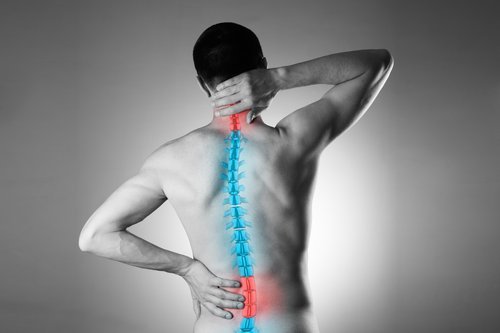Florence Charbonneau-Dufresne
Montreal physiotherapy
WHO SAYS OFFICE WORK,
MUSCULOSKELETAL PAIN!
. . . . . . . . . . . . . . . . .
Occupational Therapy 101 for the Office Worker
What is musculoskeletal pain?
Musculoskeletal pain is pain associated with bones, muscles, tendons, nerves, ligaments and everything else that is connected to them.
They appear following repeated movements, prolonged postures and often during a too rapid increase in activity, not allowing the body to adapt, which creates an overload.
. . . . . . . . . . . . . . . . .
Office work
In 2017, many workers spend long hours in front of a computer as part of their job.
This prolonged posture and associated repetitive motions can cause musculoskeletal pain.
While this does not prevent all injuries, optimal posture and good habits can reduce their incidence.
. . . . . . . . . . . . . . . . .
Optimal Posture
The first step in reducing office-related pain is to make sure you have the best possible posture.
If you have the chance, you can have your workstation evaluated by an ergonomist or occupational therapist.
If not, you can make some adjustments on your own:
Computer screen at eye level. This avoids constantly looking down and thus having neck pain or headaches.
Feet should touch the floor and thighs should be parallel to the floor. If your chair is too high, you can use a footrest to support your feet.
The lower back should be supported by the back of the chair and have a slight lumbar support to keep the lordosis (arch of the lower back). This prevents the lower back from sagging with prolonged pressure from the body weight and creating lower back pain or even sciatica. You can use a hand towel folded in 4 to create a slight curve in your lower back.
The upper back should also be supported by the back of the chair. This prevents the spine from leaning too far forward and creating tension in the upper back and even crushing the neck. Your neck should be naturally aligned with the rest of your spine.
The elbows should be resting on the armrests of the chair and the forearms should be parallel to the floor, so the keyboard should be at the same height as the armrests. Wrists should be in a neutral position and supported, not bent to either side. A foam support can be used to support the wrists. This prevents tennis elbow and carpal tunnel syndrome.
. . . . . . . . . . . . . . . . .
Alternative positions
For people with existing back problems, it is possible to alternate between the conventional chair and an exercise ball. This helps to recruit the stabilizing muscles.
However, it is better to integrate it gradually, for example, by doing 15 min per 2 hours and increasing gradually, because the muscles must work to keep the optimal position.
Another alternative to back pain for office workers is the standing desk.
This is an adjustable tower on which you place your computer and which can be raised, so that you can work standing up.
This prevents crushing of the lower back, which also causes crushing of the neck.
As with the ball, it must be integrated gradually.
. . . . . . . . . . . . . . . . .
Good habits
In spite of an exemplary position, it is necessary to get into the habit of getting up every hour, walking a little, stretching the upper back, moving the neck for 5 minutes.
. . . . . . . . . . . . . . . . .
Florence Charbonneau-Dufresne, Physiotherapist Plateau and NDG
florence.charbonneau-dufresne@cliniquealtermed.com


